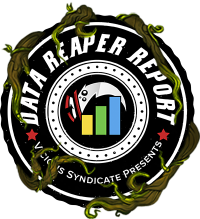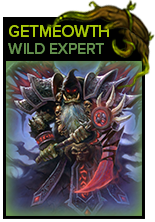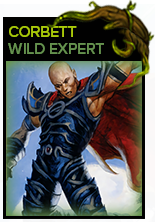
Welcome to the 32nd edition of the Wild Data Reaper Report! This report discusses the format following the 24.4.3 patch on October 13th.
Contributing to the Data Reaper project through Hearthstone Deck Tracker or Firestone allows us to perform our analyses and to issue the weekly reports, so we want to wholeheartedly thank our contributors. Without the community’s contributions, there would be no project. Contributing data is very easy, so if you enjoy our content and would like to make sure it remains consistent and free – Sign up!
Quick Links
Class/Archetype Distribution | Matchup Winrates | vS Power Rankings | Meta Score | Class Analysis & Decklists | How to Contribute | Credits
Number of Games
| Overall | 604,000 |
| Top 1K Legend | 22,000 |
| Legend (Excluding Top 1k) | 49,000 |
| Diamond 4 to 1 | 86,000 |
| Diamond 10 to 5 | 104,000 |
| Platinum | 96,000 |
| Bronze/Silver/Gold | 247,000 |
Class/Archetype Distribution
[TABS_PRO id=59851]
Class Frequency Discussion
Priest is the most popular class in the format, nearing a 20% play rate throughout ladder. This high play rate primarily boils down to two decks, Reno Priest and Big Priest. It’s a close split in popularity between these two until we get to the top legend bracket, where we see Big Priest’s presence dramatically fall off. There is a very small amount of Divine-Spirit Priest and Aggro Shadow Priest, with a slight uptick in Shadow Priest within top legend.
Rogue increases in popularity as you move up the ladder. At Diamond ranks, Pirate Rogue is the most popular Rogue deck. At legend, there’s a noticeable increase in Miracle and Pillager Rogue that accelerates further into top legend. Here, Rogue is the most popular class at over 20% play rate and Miracle Rogue is one of the most popular decks, nearing a 10% play rate, while Pirate and Pillager Rogue sit at around 5%.
No matter where you are on ladder, Shaman is mostly comprised of two highly visible archetypes: Even Shaman and Shudderwock Shaman.
Mage is steadily popular throughout ladder with Secret Mage dominating play at all rank brackets. Quest Mage is a distant 2nd above Diamond 4 and shows an uptick at top legend.
You’re never sure what you’re going to get when you queue into a Druid on ladder as the class has a variety of archetypes. You’re most likely to queue into the modern-day adaptation of Jade Druid, a fatigue-focused deck running Dew Process to serve as both a draw engine as well as a ticking clock for the opponent, with Jade Idol providing fatigue-resistance. Some players opt for different styles of finishers with Reno, Dragon, or Mecha’thun Druid. Others are trying a more intense Mill/Fatigue-focused gameplan by adding Hedge Maze/Selfish Shellfish and/or Coldlight Oracle alongside their Dew Process.
Warlock is the last class that seems to be taken seriously at higher levels of play. Much like Druid, you’re not quite sure what you’re going to get when you queue into one. The class has four archetypes that are consistently played: Reno Warlock, Curse Warlock, a more traditional Demon-focused Control Warlock, and Mecha’Thun Warlock. Imp Warlock tends to spill over from Standard at lower ranks.
Paladin and Hunter see noticeable play on ladder but struggle to maintain much player interest past Diamond 4. Paladin is primarily centered around Dude Paladin archetypes with some dabbling in Tax and Mech Paladin. (Small) Beast Hunter is the primary deck of interest for Hunter players, running a token Beast package and Starving Buzzard, not to be confused with Standard inspired Big-Beast Hunter.
Pirate Warrior is the primary identity for the Warrior class in Wild, but Warrior becomes almost non-existent as you move into legend. Demon Hunter looks irrelevant regardless of where you are on ladder.
[TABS_PRO id=59852]

[TABS_PRO id=59854]
vS Meta Score
[TABS_PRO id=59855]
vS Power Rankings Discussion
Priest
- Reno Priest improves its performance as you move up the ladder, peaking at Tier 1 at top legend. Its favorable matchup into Miracle Rogue, which becomes the second most popular deck at this rank bracket, is a big factor. It is noteworthy that Reno Priest does have several poor matchups, especially against Druid and Mage, so its success is reliant on the continued success of Miracle Rogue.
- Big Priest looks like one of the strongest decks in the game through the large majority of ladder. We do see the deck drop off at top legend, nearing the 50%-win rate, which is the result of a rise in combo decks, such as Pillager Rogue and Quest Mage, at this rank bracket. Big Priest also tends to have worsening matchups at higher ranks, including an unfavored matchup against Reno Priest.
- Many players seem to have given up on aggressive Shadow Priests post-Renathal. However, much like in Standard, Renathal has not killed off aggressive decks at all. In fact, Shadow Priest’s tougher matchups are against decks with 30 health, as 40 health isn’t the end of the world when opponents find removal and Reno less consistently. Shadow Priest is extremely well-rounded against a variety of strategies, placing it in Tier 1 at all levels of play.
Rogue
- Miracle Rogue is the best deck in the format at top legend. It is very skill-intensive and improves its performance in many matchups at higher levels of play. However, it does have some good answers, some are well-established, and some are flying under the radar.
- But Miracle Rogue isn’t the hardest deck in the format. Pillager Rogue is the deck that exhibits the highest skill ceiling, with drastic improvement in its performance at top legend. Pillager Rogue performs better against Reno Priest and Shudderwock Shaman, which are good Miracle Rogue counters, but is worse in faster matchups such as Secret Mage and Even Shaman. It’s a late-game glass cannon.
- Pirate Rogue does very well on the climb to legend, where it’s firmly in Tier 1, before dropping off to Tier 2 at legend. It tends to lose to the strongest decks at higher levels: Miracle Rogue, Reno Priest, Secret Mage, and Even Shaman.
- Bomb Rogue may not be popular, but it’s performing well, consistently placing in Tier 2 at all rank brackets. It has good matchups against Big/Reno Priest, Miracle/Pillager Rogue, and slow Warlock decks.
Shaman
- Even Shaman is extremely powerful at all levels of play. It is the undisputed best deck in the game outside of top legend, and its performance at Diamond 5 and below is absurd (~60% WR at Bronze through Platinum). There aren’t many counters to this deck. You’re going to have to rely on extremely powerful defensive shells in Reno Warlock or Shudderwock Shaman, decks that can stall or remove waves of totemic threats.
- Shudderwock Shaman exponentially improves at higher rank brackets, nearing Tier 1 at top legend. There are two reasons for this. The first is that this archetype is very unrefined, so the ‘optimal’ builds are much more popular at higher ranks. The second is that it’s a very good counter to Miracle Rogue.
Mage
- Secret Mage is 2nd best to Even Shaman at most rank brackets, while boasting a very different matchup spread. Secret Mage does very well into the slower, defensive decks of the format. It struggles against decks that can skirt disruptive secrets and develop big stats quickly onto the board: Big Priest, Even Shaman, and Miracle Rogue.
- Quest Mage gets better at higher ranks but is never too good. It’s a very polarizing deck with dominant matchups into slow strategies and terrible matchups into fast ones.
Druid
- Druid doesn’t look very impressive. It exhibits some promise and scope for improvement in its young archetypes: Reno and Dragon Druid. The Jade/Mill direction doesn’t seem to deliver great results.
Warlock
- Warlock decks tend to linger in Tier 3 throughout ladder. Reno Warlock’s strong matchups into Rogue decks carry it into Tier 2 at top legend. Jailer is destroying Mecha’thun Warlock’s performance, so data related to the archetype isn’t ideal. Curse Warlock is unlikely to improve.
Hunter
- Despite getting multiple nerfs in the last patch, Beast Hunter looks more than fine, hovering between Tier 1 and Tier 2. It’s certainly not as powerful as it was before (it used to be close to Even Shaman), but it can still deliver strong results. It’s very well rounded, possessing both a strong early game and surprising late game longevity, even grinding out decks like Reno Priest. It does seem to struggle to handle the stat-cheese in Big Priest and Miracle Rogue.
Paladin
- Paladin looks underwhelming. Mech, Dude, and Tax Paladin aren’t terrible decks, but they’re not great either and there’s no good reason to play them. The play rate of the class doesn’t lie.
Warrior and Demon Hunter
- Pirate Warrior can’t consistently stay outside of Tier 4, while Demon Hunter doesn’t even have a deck with enough of a sample size to get on the table. Based on the low sample sizes we do have; Enrage Warrior may provide some hope. Demon Hunter looks sketchier.
Class Analysis & Decklists
Demon Hunter | Druid | Hunter | Mage | Paladin | Priest | Rogue | Shaman | Warlock | Warrior
Reno Priest has abandoned the light and is almost exclusively using Darkbishop Benedictus. While previous Reno Priests lists were singularly focused on assembling the Raza and Anduin pairing and burning opponents down, current versions are more value centric. Early experiments committed a lot of slots to a thief package, but over time the deck has become slicker, putting greater focus on standalone good cards.
Reno Priest is highly popular and successful at all rank brackets, with a win rate that creeps up to Tier 1 at top legend. Both casual and highly engaged players love the deck, as it’s the most played archetype below Platinum and at legend. While it’s solid against anything playing for the board, Reno Priest’s matchup spread is still quite polarized due to its slow gameplan and inability to stop off-board damage. Theotar has helped, but at 5 mana he’s nothing close to pre-nerf Illucia.
Big Priest has become a major talking point among players and the data reveals why there are conflicting opinions in the discourse. Big Priest is one of the strongest decks for most players on ladder. Outside legend, it only trails Even Shaman and Secret Mage in win rate, with a playrate that peaks at around 9% at upper diamond.
Big Priest’s win rate sees a small decline at legend, before falling further at top legend. This decline in performance coincides with a massive decline in play rate. Big Priest remains competitive but loses percentage points against other late game strategies, as high-level players are able to deal with its game plan more effectively or assemble their own win condition faster.
The aggressive Shadow Priest is arguably the most underrated deck in Wild right now. It’s one of best performing decks at all rank brackets, but only has a playrate of 1% overall. The deck’s matchup spread is well-rounded, only having slight struggles against the other best aggressive decks of the format. Players have largely abandoned burn-oriented builds and are back to using Pirates.
Divine-Spirit Priest hasn’t looked impressive, but this could be the result of poor refinement. Spell-centric builds make up most of the archetype, and we would encourage players to try the minion-dense builds if they were to pick up the archetype. They may have more potential.
Miracle Rogue has emerged as a darling of top-level players with the archetype’s popularity tripling between upper-diamond and top legend. While its win rate is very good throughout all ranks, Miracle Rogue gets increasingly better at higher levels of play and becomes the clear-cut top performer at top legend. In the early days of the expansion, Miracle Rogue was playing Maestra and Wildpaw Gnolls. However, new builds utilizing Mailbox Dancer have completely taken over since, leaning on more explosive early turns.
Miracle Rogue isn’t without counters, notably struggling against some of the most defensive decks of the format. Some iterations used Arcane Giants to layer threats and improve these matchups. It looks like an effective option. The best choice is likely Prize Plunderer, as it can provide a huge swing in key pop-off turns. It seems to perform better than the popular Frostwolf Warmaster.
Pirate Rogue is one of the strongest decks on the climb to legend and peaks in popularity at upper diamond. At top legend, its performance drops to around 50%. Overall, the deck is holding up quite well despite zero support from the most recent expansion and mini-set.
Pillager Rogue displays one of the highest skill ceilings we’ve ever seen from a Wild deck. This deck is unplayable outside of legend, exhibiting a Tier 4 win rate. By the time we reach top legend, we see remarkable improvements in its matchups, and its winrate becomes positive. Over several expansions, Pillager Rogue has been given an abundance of draw and mana cheating, which has dramatically improved its speed and consistency. Players have dropped Elven Minstrels and minimized the number of minions in the deck, making Shroud of Concealment and Swindle highly consistent. This is the best Pillager Rogue we have ever seen.
If you’re looking for a different flavor of combo Rogue, Bomb Rogue is an excellent option. While other Rogue lists have abandoned Wildpaw Gnoll, it’s still an excellent fit for this archetype, often able to land crucial chip damage in the early game. Bomb Rogue is competitive at all rank brackets, and shares a near identical matchup spread to Pillager Rogue. The list is largely settled at this stage.
Even Shaman is an absolute force. An abundance of support from the latest expansion has led to Even Shaman having the highest win rate at all rank brackets, excluding top legend, where it is ‘just’ second best. The deck steadily increases in play rate all the way up the ladder, becoming one of the most popular decks at Diamond and beyond. Its matchup spread is only blemished by slower Warlocks and Shudderwock Shaman.
When piloting the deck, players should be highly aggressive in the mulligan. Mediocre cards such as Murskspark Eel are kept too often, while the importance of Carving Chisel cannot be overstated. In terms of build, Crackle and Frostbite perform well and give the deck reach in its toughest matchups. Windfury is another good option to provide burst and finishing potential.
There is a stark difference in the performance of Shudderwock Shaman at different ranks, fueled by key changes in build and some meta differences. Hijo and Lorthos have helped popularize Renathal Shudderwock lists which aim to make the best use of the Murloc package by cutting Twin-fin Fin Twin and allowing you to draw the stronger Murlocs more consistently. These lists also often use Zentimo and Windchill, with the intent of having a powerful draw engine.
These builds have become quite popular at the highest levels of play, where Shudderwock Shaman nears a Tier 1 placement. Outside these ranks, it doesn’t show nearly the same level of success, but remains a popular choice among all players.
Murloc Shaman sees fringe play across most of ladder before disappearing at legend. The deck is competitive, but lines up quite poorly against most top tier decks. This is a jank killer, struggling to find a niche when other decks are more refined.
Secret Mage is back to being one of the best and most influential strategies in Wild. The archetype is split between 30 and 40 card variants, but there is no real decision here, as 30-lists are significantly better at all levels of play. Renathal Secret Mage is good because Secret Mage is good, but it’s ~2% inferior in its overall win rate.
Secret Mage struggles against fellow top-tier decks Even Shaman and Miracle Rogue, as well as Big Priest. Beyond these matchups it is excellent, and downright oppressive against the solitaire-style decks of the format.
Quest Mage is one such deck and is docked percentage points in win rate due to Secret Mage’s existence alone. Quest Mage is highly polarized, awful against aggression and dominant against slower strategies. Its win rate is mediocre throughout most of ladder, peaking at top legend where it gets closer to tier 2 and has a small bump in popularity. Quest Mage hasn’t been given support over the last few card releases; lists having become settled for some time.
Mech Mage is mostly gone, as players have gravitated to new and more powerful aggressive decks.
Druid is perhaps the messiest class in Wild. Plenty of experimentation has taken place in Mill Druid, but Coldlight Oracle and Selfish Shellfish lists have proven unsuccessful. Instead, the best way to make use of Dew Process is in Jade Druid. Jade Druid lists are less all-in on the mill plan and use Jade Idol as a counter to fatigue. More cards are dedicated to draw and defensive tools.
A deck using a similar shell is Dragon Druid. While this deck uses many of the same removal spells and armor gain, it drops Dew Process, running threats and over-the-top damage. Volcanic Lumberer is seeing play for the first time since its release back in Blackrock Mountain. This huge taunt is often played for 0 mana thanks to Flipper Friends and Scale of Onyxia, enabling huge board swings. Dragon Druid is the best Druid archetype seeing significant play right now.
Reno Druid resembles Dragon Druid, adding the Highlander payoffs and Celestial Alignment. Overall, these Druid decks have plenty of overlap. They also look quite different from how they looked prior to the nerf to Wildheart Guff.
Mecha’Thun Druid lists are partially contaminated by The Jailer and so we are unable to provide a confident assessment of its strength. Aggro Druid lists resemble Standard decks at lower ranks and see very little play at higher levels.
Reno Warlock is one of the better defensive options available, particularly at higher ranks where its performance noticeably improves thanks to its Rogue matchups. The deck has abandoned the Voidcaller shell of old, instead being packed with disruption and removal. It lacks the threat density of other Reno decks, and instead has a matchup spread that resembles Shudderwock Shaman.
Curse Warlock has the damage that Reno Warlock lacks, but it comes at a cost. While Curse Warlock is strong against other control decks, it loses some edge against aggression and does significantly worse in the Miracle Rogue matchup.
Demon Warlock consists of decks using the Voidlord shell. The Howlfiend lists are terrible, but the Cube Warlock builds are better than the stats would suggest. That said, Cube Warlock doesn’t look incredibly promising.
The same story takes place for both Warlock and Druid. Mecha’thun Warlock is weighed down by The Jailer, so a confident assessment of its strength is difficult. We speculate that the deck could be as good as Tier 2 with the right build.
Imp Warlock is a spillover from Standard that sees little play at the most competitive ranks.
Among the least played classes, Beast Hunter is the one shining light. Beast Hunter was possibly the best deck in Wild prior to the changes to the Wildseeds and Harpoon Gun. This has given the deck enough breathing room to take the nerfs and remain strong.
Beast Hunter has remained highly well-rounded, able to handle the strongest aggressive decks and most slower strategies. It only shows weakness to Big Priest and Miracle Rogue. We also suspect that the Pillager Rogue matchup might flip to unfavored at higher levels of play. Beast Hunter was already underplayed at its best, so we don’t envision its play rate to have any major resurgence, despite its strength.
There’s little going on in Paladin. Nothing looks particularly promising and higher-ranked players are uninterested in experimenting with the class.
Dude Paladin consists mostly of Baku decks. Odd Paladin looks great at Platinum and low Diamond but falls off when facing stiffer competition. Its matchup spread doesn’t look too bad, but some of its worst matchups come against the more popular decks of the format, such as Even Shaman, Secret Mage, and Big Priest. Odd Paladin isn’t too far away from becoming a true contender, but it has historically seen little play even at its best moments.
There’s some weird stuff going on in Tax Paladin. Order in the Court and Renathal have become common inclusions, allowing players to exploit some cute synergies like The Leviathan and Kangor’s Endless Army. Tax Paladin sees less than 1% play, making refinement difficult for an archetype that already doesn’t look overly promising.
Mech Paladin is okay, but players have looked elsewhere for aggression.
Pirate Warrior sees a modicum of play at lower levels, and almost sneaks into Tier 2 at Platinum. That said, by the time you reach upper diamond the deck looks bad and it’s completely unplayable at top legend. However, all is not lost for Warrior.
Enrage Warrior is seeing far too little play, as it shows some promise. If the class does manage to become competitive in the format, it’s likely coming from here.
Demon Hunter is almost extinct. Relics and Big Demons are borderline non-existent. Aggro Demon Hunter may not be completely awful, but it hasn’t quite captured the imagination of the Wild player base.
Preparing our weekly article requires a significant amount of time and effort from many individuals. We would like to wholeheartedly thank our current Patreons, whose generous donations help us fund computing and server costs.
vS Gold and vS Silver are memberships aimed to support our efforts towards improving our content and data analysis while giving you some bonuses and extra features.
Contributors
Here are all the people that participated in bringing you this edition of the [Wild] vS Data Reaper Report:





















